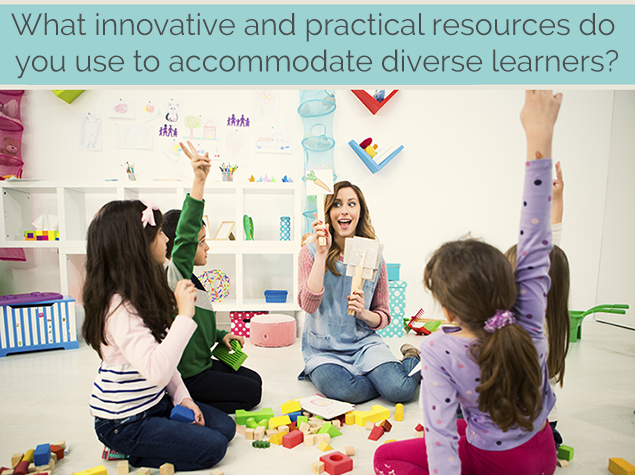How Does UDL Work In A Diverse Classroom?
Posted by Network Support · Leave a Comment
Universal Design for Learning can make your lessons more accessible and fun…
A classroom is made up of students with different qualities and capabilities. Therefore, teachers serve a growing number of students with diverse abilities.
Learning is a natural or habitual pattern of acquiring and processing information in a classroom situation. However, the core concept of learning is that people differ in how they learn and each person has a particular learning style. The way people learn is as unique as their fingerprints and for this reason, one teaching method does not fit all. It can certainly be a challenge and it is necessary for each educator to develop teaching methods that respond to the unique needs of each learner with different strengths, needs, and interests.
Universal Design for Learning (UDL) is a research-based set of principles that helps in customizing and adjusting the curriculum. To make learning universal in nature, this scientific based framework refines the approach of the educator in the way they teach, what they teach, and how they teach.
The key of the UDL framework is “flexibility.” It focuses on a curriculum which is flexible, teaching methods that are flexible, and a classroom environment that is flexible. Assessment and evaluation are also flexible without losing accuracy. Regardless of the measure of variability in the learners’ strengths and limitations, UDL assists the educators in reaching every learner by providing flexible instructional materials, techniques, and strategies. It thus promotes the engagement of each learner by making learning more accessible.
Implementation of UDL
UDL implementation is a process involving systemic change, without any specific set of rigid steps. To address the fact that both students and systems are complex and variable, each phase of UDL implementation occurs in a unique process in order to address the varied needs of the students. This makes UDL a distinct concept that attempts to hold participants to a specific lockstep implementation approach. The five phases of UDL implementation are:
1. Explore
Starting with a clearly identified need for change is critical for successful UDL implementation. This phase involves investigating why the system needs a change and identifying what needs to be addressed. It focuses on investigating UDL as a potential system-wide, decision-making framework. It also includes building awareness among the staff to develop their willingness to participate and to promote their interest which is essential to UDL implementation.
2. Prepare
This phase of preparation focuses on creating a climate that is flexible, and maintains high expectations for all learners regardless of their disabilities. It includes mapping resources, personnel structure, time management, curriculum design, and professional development. This phase also involves filtering the strategic vision and plan of action with expected outcomes.
3. Integrate
In this phase the teacher collaborates to integrate UDL into the curriculum. It involves creating individual and system-wide structures and processes to support implementation and evaluation. This is done by training the teachers to apply UDL into their instructional practices and to improve their decision making skills by choosing appropriate teaching methods, according to the unique needs of the students.
4. Scale
This is the phase of UDL implementation which focuses on expanding the many classroom strategies by extending effective practices, processes, and structures through advanced professional development and technical assistance.
5. Optimize
UDL implementation is regarded as a process of continuous improvement by sustaining the practices that have been adopted. This phase of UDL implementation focuses on building procedures that allow consistent, ongoing refinement, innovation, and improvement of teaching methods using the UDL principles to optimize the goal of making learning successful. In other words, the aim of this phase of implementation is, to maximize the improvement of teaching and learning practices, that were introduced in the previous step (Scale), in alignment with the UDL principles.
Like this article for teachers?
Browse the Professional Learning Board COURSE CATALOG to find related online courses for teachers in your state. Professional Learning Board is a leading provider of online professional development classes that teachers use to renew a teaching license or renew a teaching certificate.





